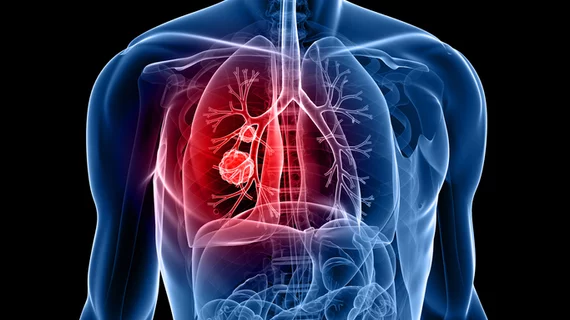Routine lung cancer screening presents new opportunity to predict CVD mortality
Physicians may soon be able to quickly assess an individual’s risk of dying from cardiovascular disease when they come in for their annual lung cancer screening exam, according to a study published Thursday.
Past efforts have combined data inherent in CT scans with other risk factors such as cholesterol levels and blood pressure, the authors noted. But by automating the process with advanced deep learning, Dutch researchers were able to predict five-year CVD mortality solely using LDCT exams.
Gathering the necessary calcification information takes less than half a second and should be easily incorporated into routine care, reported lead author Bob D. de Vos, PhD, Thursday in Radiology: Cardiothoracic Imaging.
“The method uses only image information, it is fully automatic, and it is fast,” de Vos, with University Medical Center Utrecht’s Image Sciences Institute, added in a statement. “This means that the method should be easy to implement in routine patient workups and screening.”
The technique functions in two stages, the authors explained. Initially, deep learning determines the amount and location of arterial calcification in the coronary arteries and aorta. During the second stage, a conventional statistical method picks out imaging features most predictive of five-year mortality.
In developing their approach, de Vos et al. used data from 4,451 patients who underwent LDCT over a two-year period as part of the famed National Lung Cancer Screening Trial. Once trained to compute six types of vascular calcification, the researchers further tested it on another 1,000-plus participants.
The deep learning-based algorithm outperformed a baseline model that only used self-reported patient information, including age, smoking behavior and history of illness, the researchers reported.
Building off their success, they are developing a calcium scoring tool that can utilize low-quality data, such as that impacted by cardiac motion, low-resolution images or high noise levels.
Heavy smokers already face a high risk of developing cardiovascular disease and, as the authors pointed out, die from this illness just as often as lung cancer.
And while the U.S. Preventative Services Task Force recently expanded lung cancer screening criteria to nearly double the number of people eligible for tests, some metrics suggest less than 1 in 20 qualified patients do not undergo recommended LDCT.

